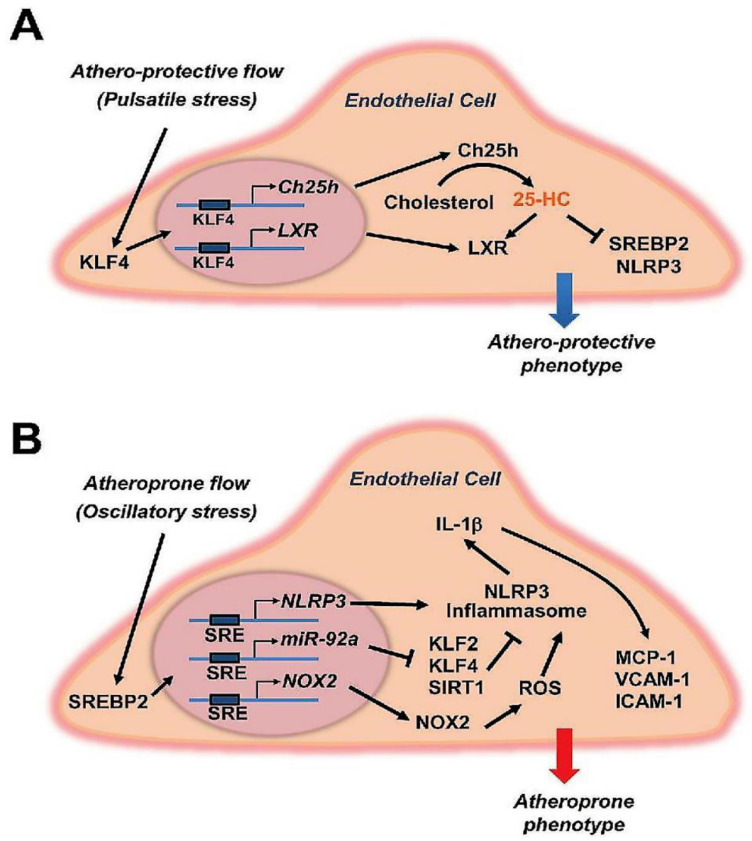Figure 3.
Fluid dynamics regulate the function of endothelial cell through (A) an atheroprotective effect favoured by the pulsatile flow inducing a higher expression of Kruppel-like factor 4 (KLF4) or alternatively (B) an atheroprone effect related to the oscillatory flow that causes an increased level of sterol regulatory element-binding proteins (SREBP). Different biochemical and molecular mechanisms regulate the two different conditions. Atheroprotective flow is characterised by substantial greater production of KLF4 that leads to the expression of Ch25h and LXR with increased intracellular levels. This mechanism promotes higher production of 25-HC, SREBP2 and NLRP3. Atheroprone phenotype as consequence of an atheroprone flow (oscillatory stress) led to increased level of SREBP2 due to greater expression of SRE and its encoding molecules. This nuclear activation favours a detrimental effect by increased intracellular level of KLF2, KLF4, SIRT1 (gene miR-92a), NOX2 (gene NOX2) and NLRP3 inflammasome (gene NLRP3). The results are higher level of IL-1β leading to a major production of MCP-1, VCAM-1 and ICAM-1. Abbreviations: 25-HC = 25-hydroxycholesterol, CH25H = Cholesterol 25-Hydroxylase, KLF = Kruppel-like factor, ICAM-1 = Inter Cellular Adhesion Molecule-1, IL = interleukine, (MCP-1/CCL2) = Monocyte chemoattractant protein-1, NLRP3, NOD-like receptor family, pyrin domain containing 3, SREBP2 = sterol regulatory element-binding protein-2, SIRT1 = Sirtuin 1, VCAM-1 = vascular cell adhesion molecule 1.

